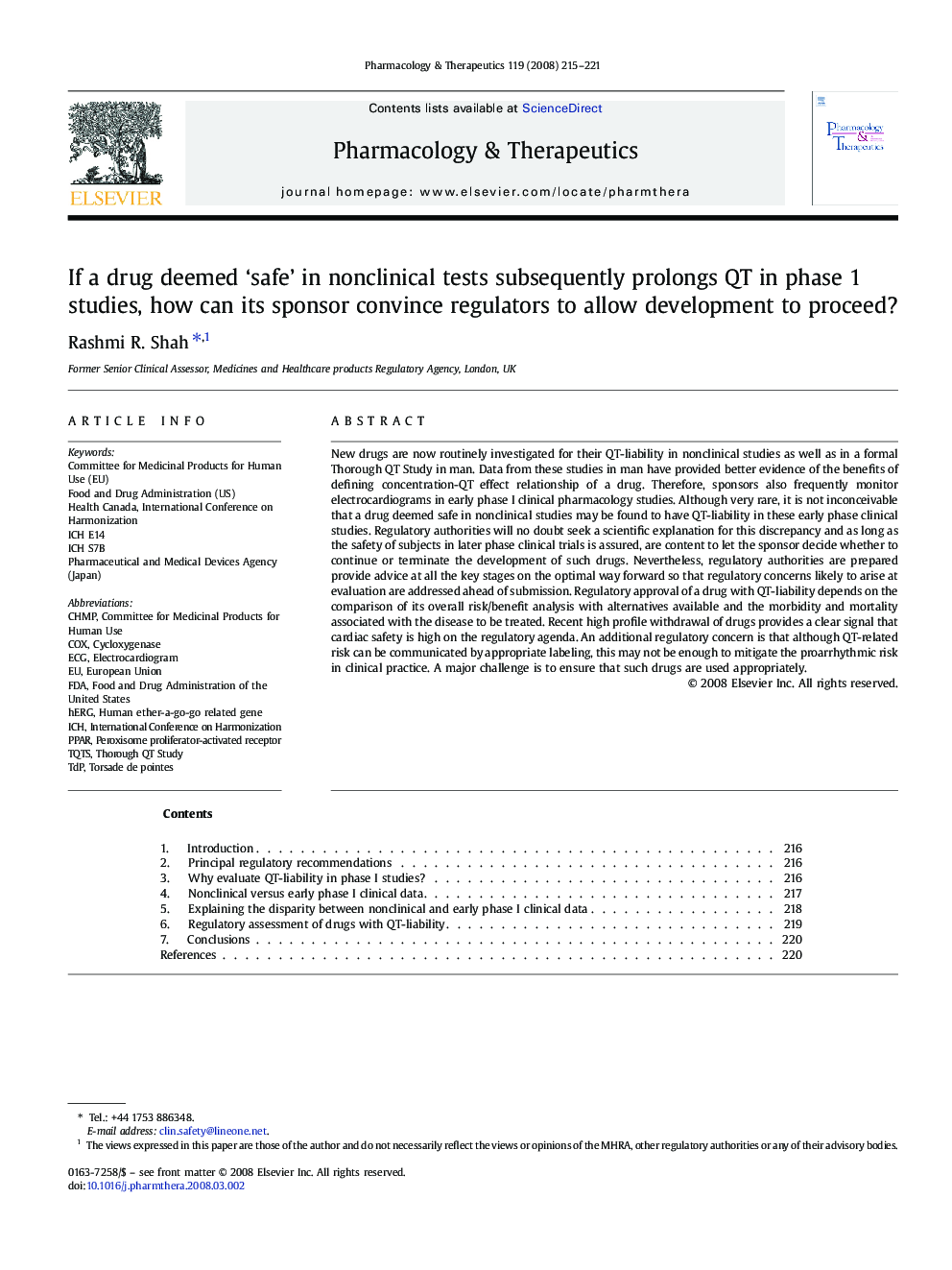| کد مقاله | کد نشریه | سال انتشار | مقاله انگلیسی | نسخه تمام متن |
|---|---|---|---|---|
| 2563871 | 1127571 | 2008 | 7 صفحه PDF | دانلود رایگان |
عنوان انگلیسی مقاله ISI
If a drug deemed 'safe' in nonclinical tests subsequently prolongs QT in phase 1 studies, how can its sponsor convince regulators to allow development to proceed?
دانلود مقاله + سفارش ترجمه
دانلود مقاله ISI انگلیسی
رایگان برای ایرانیان
کلمات کلیدی
TDPFDAICH S7BICH E14CycloxygenaseCHMPThorough QT studyTorsade de pointesHERGPPARCOXEuropean Union - اتحادیه اروپاECG - الکتروکاردیوگرام یا نوار قلبelectrocardiogram - الکتروکاردیوگرام یا نوار قلبICH - منhuman Ether-a-go-go Related Gene - ژنتیکی مربوط به انسان اتر-برو-بروCommittee for Medicinal Products for Human Use - کمیته دارویی برای استفاده انسانیInternational Conference on Harmonization - کنفرانس بین المللی هماهنگیperoxisome proliferator-activated receptor - گیرنده فعال فعال پروکسیوم
موضوعات مرتبط
علوم پزشکی و سلامت
داروسازی، سم شناسی و علوم دارویی
داروشناسی
پیش نمایش صفحه اول مقاله

چکیده انگلیسی
New drugs are now routinely investigated for their QT-liability in nonclinical studies as well as in a formal Thorough QT Study in man. Data from these studies in man have provided better evidence of the benefits of defining concentration-QT effect relationship of a drug. Therefore, sponsors also frequently monitor electrocardiograms in early phase I clinical pharmacology studies. Although very rare, it is not inconceivable that a drug deemed safe in nonclinical studies may be found to have QT-liability in these early phase clinical studies. Regulatory authorities will no doubt seek a scientific explanation for this discrepancy and as long as the safety of subjects in later phase clinical trials is assured, are content to let the sponsor decide whether to continue or terminate the development of such drugs. Nevertheless, regulatory authorities are prepared provide advice at all the key stages on the optimal way forward so that regulatory concerns likely to arise at evaluation are addressed ahead of submission. Regulatory approval of a drug with QT-liability depends on the comparison of its overall risk/benefit analysis with alternatives available and the morbidity and mortality associated with the disease to be treated. Recent high profile withdrawal of drugs provides a clear signal that cardiac safety is high on the regulatory agenda. An additional regulatory concern is that although QT-related risk can be communicated by appropriate labeling, this may not be enough to mitigate the proarrhythmic risk in clinical practice. A major challenge is to ensure that such drugs are used appropriately.
ناشر
Database: Elsevier - ScienceDirect (ساینس دایرکت)
Journal: Pharmacology & Therapeutics - Volume 119, Issue 2, August 2008, Pages 215-221
Journal: Pharmacology & Therapeutics - Volume 119, Issue 2, August 2008, Pages 215-221
نویسندگان
Rashmi R. Shah,